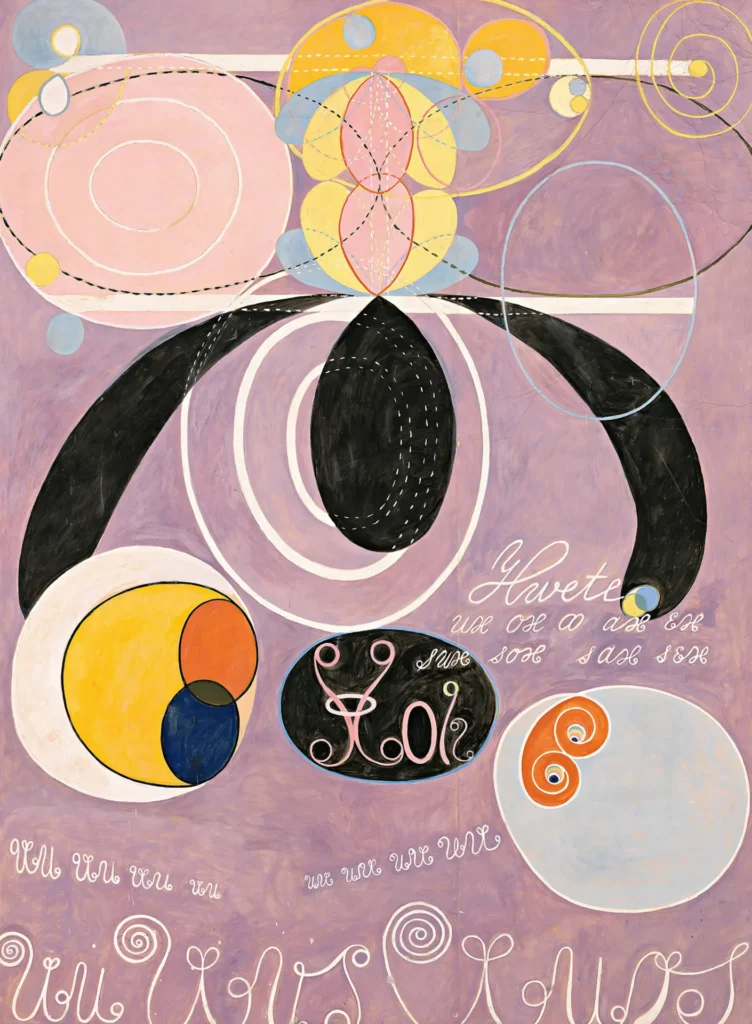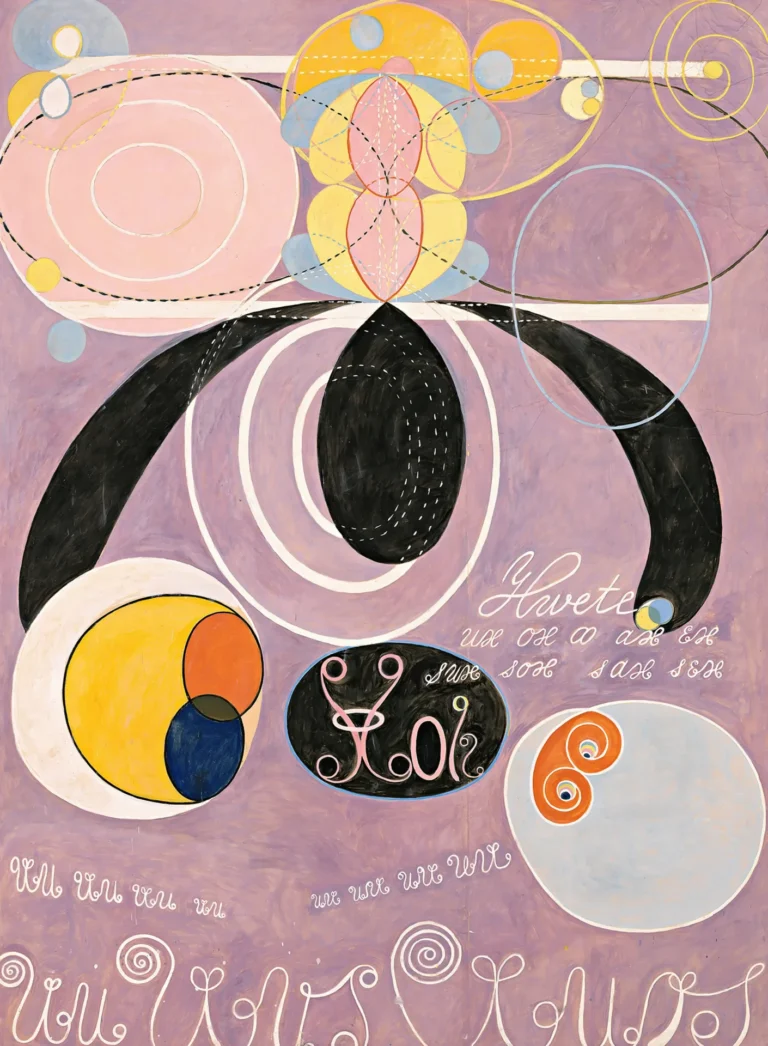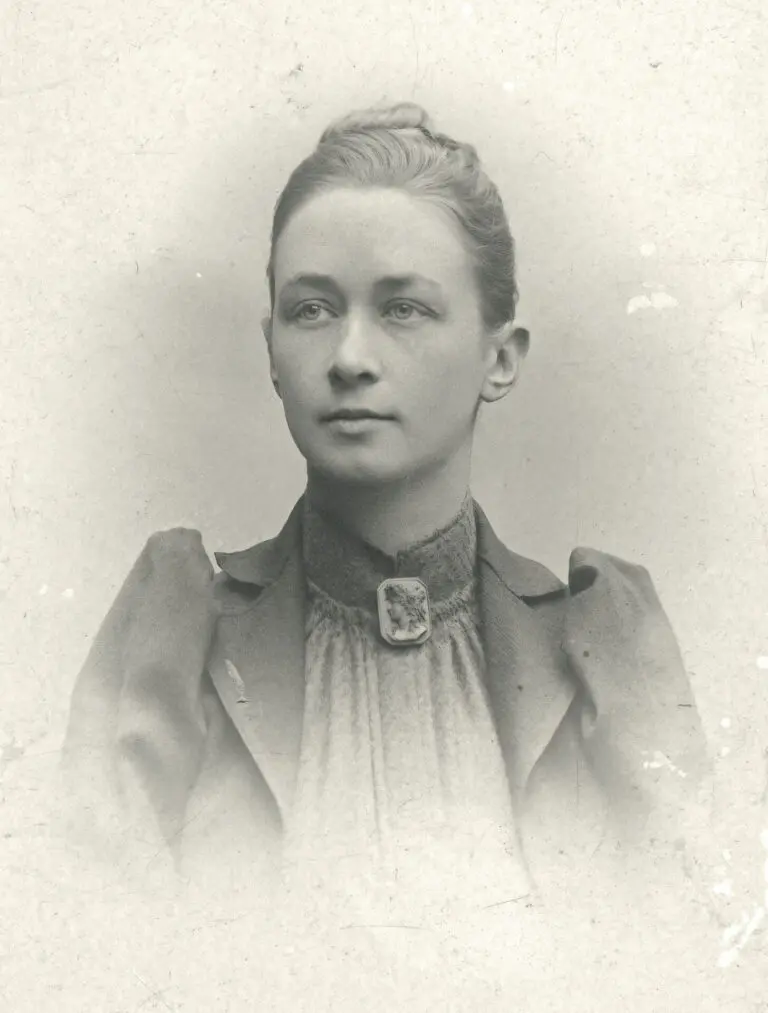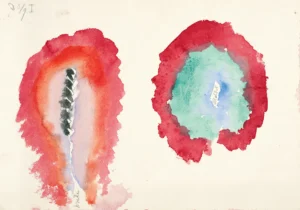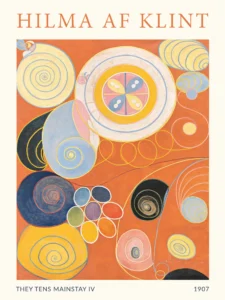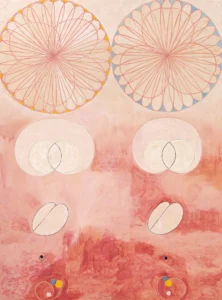The Ten Largest, No. 6 (1907)
Created in 1907, The Ten Largest, No. 6 is part of Hilma af Klint's iconic series that explores the stages of human existence. This grand-scale painting embodies vibrant colors and abstract forms, echoing themes of growth and spiritual evolution. Af Klint, influenced by spiritualism and theosophy, infused her visions and inner explorations into the artwork, which is now revered as a forerunner to modern abstract art.
1906 - 1907
About the Artwork
Did You Know
Liked what you see? Add it to your collection.
Enjoyed reading? Share it.
... continued
Series Context
"The Ten Largest" is a series of ten paintings that are part of a larger body of work titled "Paintings for the Temple," which af Klint began in 1906. This series is divided into four groups, each representing a different stage of human life: Childhood, Youth, Adulthood, and Old Age.
Specific Painting: No. 6
The Ten Largest, No. 6 falls under the category of Adulthood. This painting, like the others in the series, is monumental in size, measuring 3.28 meters by 2.40 meters. It is characterized by abstract, symbolic, and vibrant depictions that reflect af Klint's spiritual and theosophical interests.
Artistic Style and Themes
The painting features free-wheeling organic forms, varying in size and color, set against a background. It includes symbols such as script, lettering, and diagrammatic lines, as well as shapes reminiscent of botanical and biomorphic forms. These elements are interconnected yet separate, reflecting themes of growth, fertility, and the spiritual evolution of humanity.
Creation and Inspiration
Af Klint created these paintings following visions and non-verbal cues she believed she received from the spirit world. Her work was heavily influenced by spiritualism, theosophy, and automatic drawing practices she engaged in with a group of like-minded women known as "The Five."
Exhibition and Legacy
"The Ten Largest" series, including "No. 6," has been exhibited in various museums, including the Moderna Museet in Stockholm and the Guggenheim Museum in New York. Despite being created over a century ago, af Klint's work remained largely unknown until recent decades, and it is now recognized as a pioneering contribution to modern abstract art.




